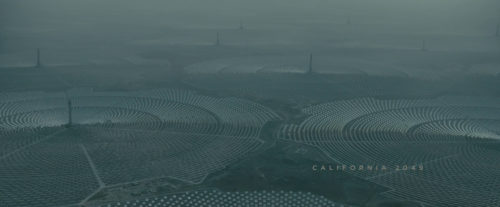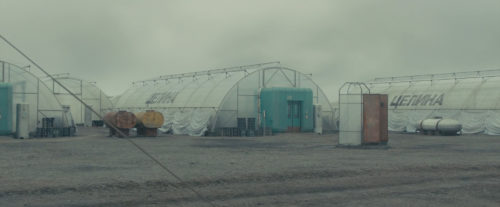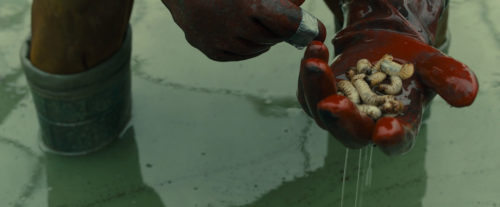California Farmers Are Planting Solar Panels as Water Supplies Dry Up
August 2nd, 2019In Blade Runner 2049, the California Central Valley looks like this:
(In case you’re wondering, the solar concentrators in the opening scene of the film were inspired by the idiotic Ivanpah Solar Power Facility, which is based on concentrated solar thermal energy.)
Nestled in among the heliostat fields are protein farms:
They grow some variety of weevil which seems to have been genetically modified to live in vats of liquid.
Mmm mmm good.
Concentrated solar (as shown in the film) isn’t going to take off. However, if the place gets covered with the more conventional photovoltaic panels, it will be interesting to see if insect protein farms come along too.
After all, in Do Androids Dream of Electric Sheep? Philip K. Dick wrote, “Insects…are especially sacrosanct.”
That’s interesting, considering the fact that Do Androids Dream of Electric Sheep? was published in 1968.
Flash forward several decades and there are a steady stream of articles related to insect population declines, and even, “The Earth may not have any insects at all by 2119.”
Via: Los Angeles Times:
Jon Reiter banked the four-seat Cessna aircraft hard to the right, angling to get a better look at the solar panels glinting in the afternoon sun far below.
The silvery panels looked like an interloper amid a patchwork landscape of lush almond groves, barren brown dirt and saltbush scrub, framed by the blue-green strip of the California Aqueduct bringing water from the north. Reiter, a renewable energy developer and farmer, built these solar panels and is working to add a lot more to the San Joaquin Valley landscape.
“The next project is going to be 100 megawatts. It’s going to be five times this size,” Reiter said.
Solar energy projects could replace some of the jobs and tax revenues that may be lost as constrained water supplies force California’s agriculture industry to scale back. In the San Joaquin Valley alone, farmers may need to take more than half a million acres out of production to comply with the Sustainable Groundwater Management Act, which will ultimately put restrictions on pumping.



